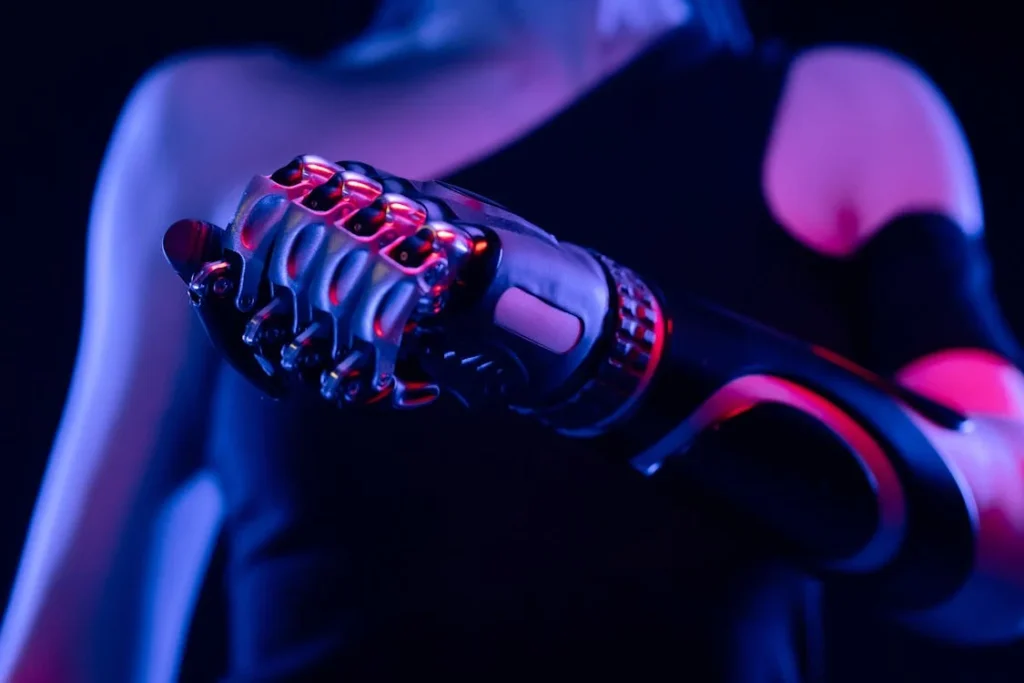When you rely on a prosthetic hand every day, comfort and ease matter just as much as strength and precision. While early prosthetics focused mostly on getting the job done, modern technology now brings something far more important to the table: long-term comfort through smart design. At Robobionics, we’ve seen firsthand how advanced grip technology can completely change the user experience—not just by making tasks easier, but by protecting the body from wear and tear over time.
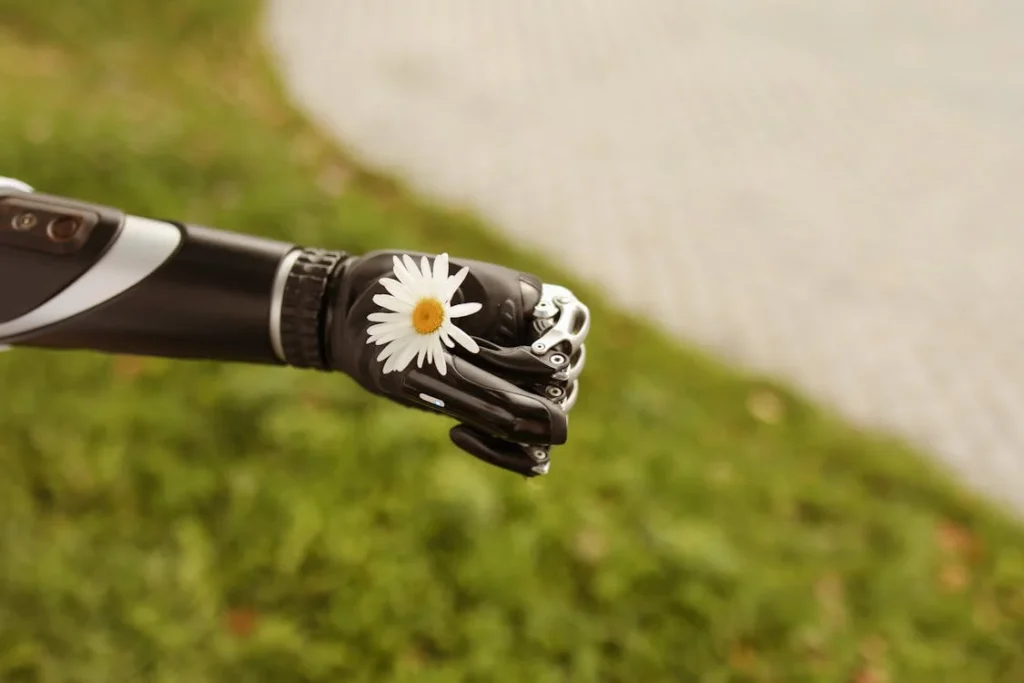
How Advanced Grip Design Reduces Strain on the Body Over Time
Understanding the Body-Prosthetic Relationship
When someone first starts using a prosthetic hand, their attention naturally goes to the hand itself—how it looks, how it moves, and how well it holds things. But over time, it becomes clear that a prosthetic affects more than just the hand. It changes how your whole body moves.
It impacts your shoulder, elbow, back, neck—even your posture. That’s why grip technology is about more than just holding objects. It’s about creating a tool that works with your body, not against it.
If the grip requires too much effort or feels unnatural, users start making small adjustments to compensate. Maybe they raise their shoulder a little higher. Maybe they lean forward slightly. These small habits build up.
After months or years, they can lead to discomfort, tension, or even long-term injury. That’s where advanced grip tech steps in—it allows the hand to do the hard work so the rest of your body doesn’t have to.
Modern grips are designed not just to be strong, but smart. They adjust to different object shapes, materials, and weights without needing you to overthink or overcompensate.
That reduces the need for awkward angles or unnatural postures. You don’t have to strain your arm to get a firm hold. You don’t have to twist your wrist to keep something steady. The prosthetic adapts to the task—and your body stays relaxed.
The Role of Grip Precision in Joint Health
Traditional prosthetics often relied on basic open-and-close mechanics. They could hold things, sure—but not always gently, and not always with control. This lack of precision forced users to use extra effort just to maintain a grip.
If the object was slippery or oddly shaped, the user might tighten their muscles or lock their elbow, just to keep it from falling. That constant tension takes a toll, especially on the shoulder and upper back.
With advanced grip technology, the precision improves dramatically. The hand no longer just clamps—it responds. Sensors pick up subtle signals from the user or the environment, adjusting the grip force automatically.
This takes pressure off the rest of the body. You don’t need to freeze your whole arm in one position just to stabilize a light object. The hand itself provides stability.
Over time, this means less joint stress, fewer muscle spasms, and reduced fatigue. For someone using a prosthetic eight, ten, or twelve hours a day, these small ergonomic improvements turn into major benefits.
By reducing the physical demand on your upper body, your prosthetic actually protects you from secondary pain and injury.
Better Grip, Better Balance
One thing people don’t always connect to grip strength is balance. But think about it: if one side of your body is working harder than the other, it throws off your center of gravity.
This imbalance isn’t just tiring—it can be dangerous. It can increase the risk of trips, falls, and chronic pain, especially in the hips and lower back.
With older or poorly calibrated prosthetics, users often find themselves adjusting their stance constantly. They lean to one side. They compensate with their non-prosthetic arm.
They shift their weight forward. These aren’t conscious choices—they’re your body trying to stay stable.
Advanced grip systems solve this problem by doing their job so well, the rest of the body can stay neutral. If your prosthetic grips reliably, you don’t need to overcorrect with your spine or legs. You don’t have to brace or shift weight.
You simply reach, hold, and move on—just like anyone else. Over time, this reduces wear on the spine, hips, and knees. It supports better posture and helps you move more naturally in every part of your day.
Long-Term Use Without Long-Term Fatigue
One of the most common complaints from prosthetic users is fatigue—not just in the residual limb, but throughout the entire body. This makes sense when you consider how much energy goes into controlling a device that isn’t fully in sync with your movement. When every task requires thought, tension, and effort, it drains you faster than you realize.
But with modern grip systems that are responsive and intuitive, that mental and physical load is reduced. You don’t have to focus so hard on the position of your wrist, or whether the grip will hold. The system takes on that job, freeing your mind and muscles.
This freedom means you can go longer without rest. You can do more in your day. You feel less worn out at the end of it. And that consistent comfort and energy adds up. It means more independence, more productivity, and a higher quality of life.
Advanced grip tech is like shifting from a manual tool to a power-assisted one. The results may seem subtle at first, but over time they transform the user experience. You’re not just using your prosthetic—you’re partnering with it.
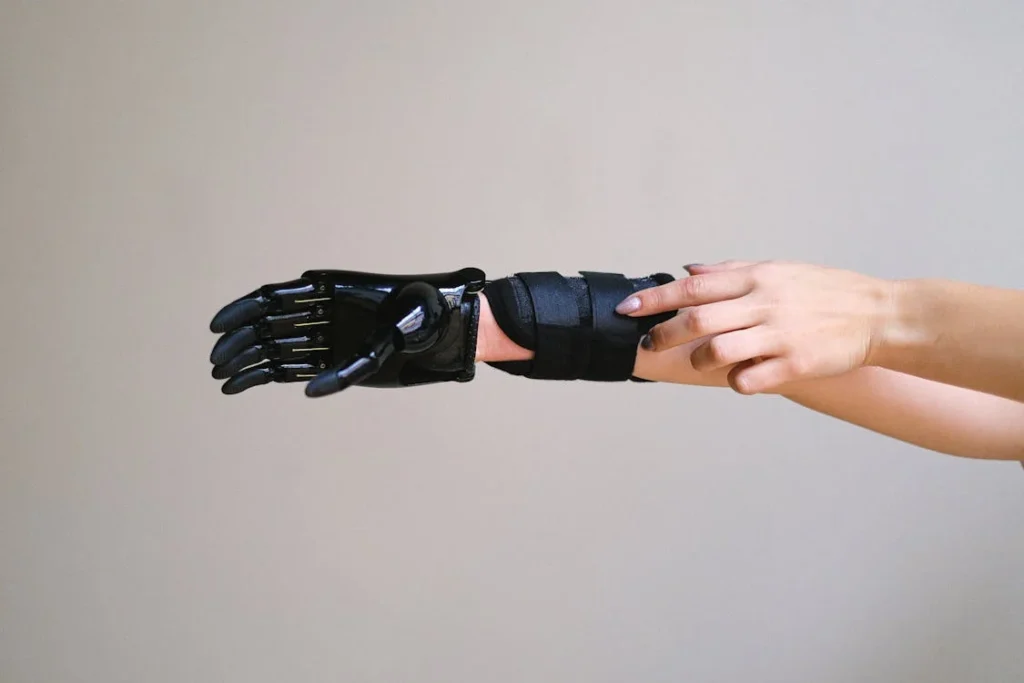
How Advanced Grip Tech Supports Repetitive Tasks and Prevents Micro-Stress Injuries
Understanding the Risks of Repetitive Motion
Repetition is part of daily life. Whether you’re typing, lifting small items, cooking, or writing, your hands do the same motions again and again.
For someone using a prosthetic hand, these repeated actions carry more risk than most people realize. Without proper support from the device, repetition can turn into strain. And over time, strain becomes pain.
What makes repetitive motion especially challenging is that the discomfort doesn’t show up all at once. It builds slowly. A bit of tightness in your shoulder one week.
A sore neck the next. A lingering ache in your elbow after a long day. These micro-stress injuries are easy to brush off in the beginning. But if the root cause is your prosthetic grip working against you, the damage continues under the surface.
Advanced grip technology is designed to stop this cycle before it begins. It reduces the effort needed to repeat motions. It softens the impact of repetitive grip force. And most importantly, it protects your body by adapting to the way you move—not forcing you to adapt to the way it works.
How Dynamic Grip Control Changes Everything
One of the biggest breakthroughs in recent prosthetic design is dynamic grip control. This means your prosthetic hand doesn’t just grip once and hold—it adjusts itself during the task. It knows when to tighten, when to loosen, and when to shift pressure based on what you’re doing.
Imagine cutting vegetables. You hold the knife one way to start. As you chop, the angle of your wrist changes. Your grip needs to shift too—tighter at times, more relaxed at others.
Older prosthetics could only hold in one fixed position. But today’s hands make those subtle changes automatically. That movement mimics the way a natural hand adapts, and it reduces the stress on your limb and the rest of your body.
This fluid response to repetitive tasks is one of the best ways to prevent long-term stress. Your muscles don’t have to lock into place to compensate for a rigid grip. Instead, they stay active but relaxed.
That means fewer muscle knots, fewer posture adjustments, and a healthier body overall.
Grip Memory and Task Familiarity
Some prosthetic hands now come with learning features. They remember how you grip certain objects—like your toothbrush, your phone, or your favorite cup—and adjust automatically the next time you use them. This is more than just a neat feature. It’s a game changer for comfort.
By creating task-specific grip profiles, your prosthetic gets smarter the more you use it. It recognizes familiar patterns and responds faster, with less effort on your part.
That’s not just convenient. It also cuts down on repeated strain. The less force and attention needed to hold something securely, the less tension builds in your muscles and joints.
The body thrives on efficiency. When your prosthetic helps you move efficiently, you protect your tissues from overuse—and you build habits that support healthy movement in the long run.
Reducing Force Where It’s Not Needed
One of the most overlooked causes of injury in prosthetic users is overgripping—using more force than necessary just to feel secure. This might happen because the user doesn’t fully trust the hand, or because the hand itself isn’t calibrated for subtle pressure changes.
Over time, this habit of overgripping creates constant tension in the forearm, upper arm, and shoulder. That tension can cause tendinitis, nerve irritation, or even circulation problems. But with grip tech that senses when just a light touch will do, you don’t have to squeeze harder than needed. The hand does the fine work, while your body stays balanced.
By keeping grip force appropriate to the task, modern systems prevent the kind of overuse that leads to long-term damage. And because the pressure is evenly distributed, it’s easier on both the limb and the socket interface.
How Grip Tech Supports Routine, Not Just Movement
Comfort in repetition is about rhythm. When your prosthetic responds at the right pace, with the right amount of effort, your daily routine flows. You don’t feel interrupted or held back. You’re not constantly correcting your position or redoing a grip.
This consistency lowers cognitive fatigue too. You’re not worrying about whether your hand will drop something, or if you’ll need to reposition. That mental ease creates physical ease. It allows your body to move freely, without the tension that comes from always anticipating an issue.
Advanced grip tech gives you that consistency. It doesn’t just support movement—it supports routine. That kind of support reduces stress, builds confidence, and keeps your body in a healthier state across the board.

How Adaptive Grip Shapes Help Maintain Natural Posture and Reduce Whole-Body Fatigue
Why Grip Shape Matters More Than You Think
When we talk about grip technology, most people immediately think of strength or speed. But shape—the way a prosthetic hand conforms to an object—is just as important. In fact, grip shape plays a huge role in how your whole body reacts to a task.
If the hand doesn’t match the shape of what you’re holding, even slightly, your body will compensate. That means your wrist may twist, your elbow may shift, or your back may lean—all small movements that can become big problems over time.
The shape of the grip is not just about holding the object. It’s about how the hand holds in relation to your natural posture. A poorly designed grip forces you to do the adjusting. An advanced, adaptive grip adjusts to you. That difference, over hundreds of actions each day, has a powerful impact on fatigue, comfort, and even safety.
Adaptive grip shapes mimic the natural curves of the human hand. Instead of clamping like a mechanical claw, they form around objects using flexible fingers or responsive material. That means fewer awkward wrist angles, more neutral joint positions, and better alignment of the whole arm.
Preserving the Neutral Wrist Position
One of the most important concepts in ergonomics is the neutral wrist position. This is when your wrist is straight—not bent too far forward, backward, or to either side. Keeping your wrist neutral reduces the strain on your tendons, ligaments, and nerves. It also allows for stronger, safer grip control.
Traditional prosthetic hands often forced users to bend their wrist into uncomfortable angles just to hold objects securely. This was especially common when lifting heavier items or handling objects with irregular shapes. Over time, repeated stress on the wrist leads to pain, swelling, or even conditions like carpal tunnel syndrome.
With adaptive grip shapes, the fingers adjust to the object’s contour. The hand doesn’t rely on your wrist angle to get a solid hold. You can lift, hold, and move without straining or overextending. The more your wrist stays in that neutral zone, the less energy your body uses—and the longer you can stay active without fatigue.
This is a small detail with massive payoff. Over months and years of use, preserving that natural wrist posture protects your hand, your joint, and your overall comfort.
Maintaining Shoulder and Neck Alignment
Fatigue doesn’t just come from the hand or the wrist. It spreads through the chain—wrist to elbow, elbow to shoulder, shoulder to neck. When your prosthetic doesn’t grip comfortably, you naturally make small shifts.
Maybe you raise your shoulder just a bit, or tilt your head to see what’s happening. You might hold your breath during precise movements. These things might seem harmless in the moment, but they add up to long-term discomfort.
Adaptive grip shapes reduce the need for these adjustments. Because the grip forms around the object instead of forcing you to reposition, your shoulder stays relaxed. Your head stays level. Your neck muscles stay loose.
This kind of ergonomic balance doesn’t just reduce pain—it increases endurance. You can focus on your task without feeling like your entire upper body is being pulled into the motion. Whether you’re sitting at a desk or walking around doing chores, you maintain a more upright, balanced posture. That saves energy and keeps your body feeling strong.
Handling Irregular and Delicate Objects Without Strain
Everyday life is full of objects that don’t fit neatly into one grip type. Think of a slippery water bottle, a rounded fruit, a wrinkled shopping bag, or even something as fragile as a flower. These items require not just grip strength, but grip intelligence—the ability to hold gently, at the right angle, with just enough force to stay secure.
Adaptive grips are designed to meet that challenge. Their shape-shifting flexibility means you can handle more types of objects without overcorrecting. You don’t have to rotate your wrist unnaturally just to get the right angle. You don’t need to squeeze tighter than necessary. The hand molds to the task, while your posture stays calm and steady.
This not only helps prevent fatigue—it also boosts your efficiency. You get more done with less effort. Over time, that kind of movement becomes second nature. Your grip feels natural, your posture feels balanced, and your energy stays high.
How Small Adjustments Lead to Big Gains
Sometimes it’s not a major redesign that changes everything—it’s the fine details. The slight curve of a finger pad. The way pressure is distributed through the palm. The soft cushioning at key contact points. These aren’t cosmetic upgrades. They’re comfort features rooted in real biomechanics.
By supporting the hand’s natural shape, these design elements reduce the tiny adjustments your body usually makes without you even noticing. You stop bracing. You stop tilting. You stop tensing. These are the habits that drain your strength over time—and they disappear when the grip simply fits better.
Over weeks and months, this adds up. You go longer without fatigue. You sleep better because your muscles aren’t overworked. You recover faster from activity. You feel more confident with your movements. All of this comes from the way your prosthetic grip works with your body instead of making you work around it.
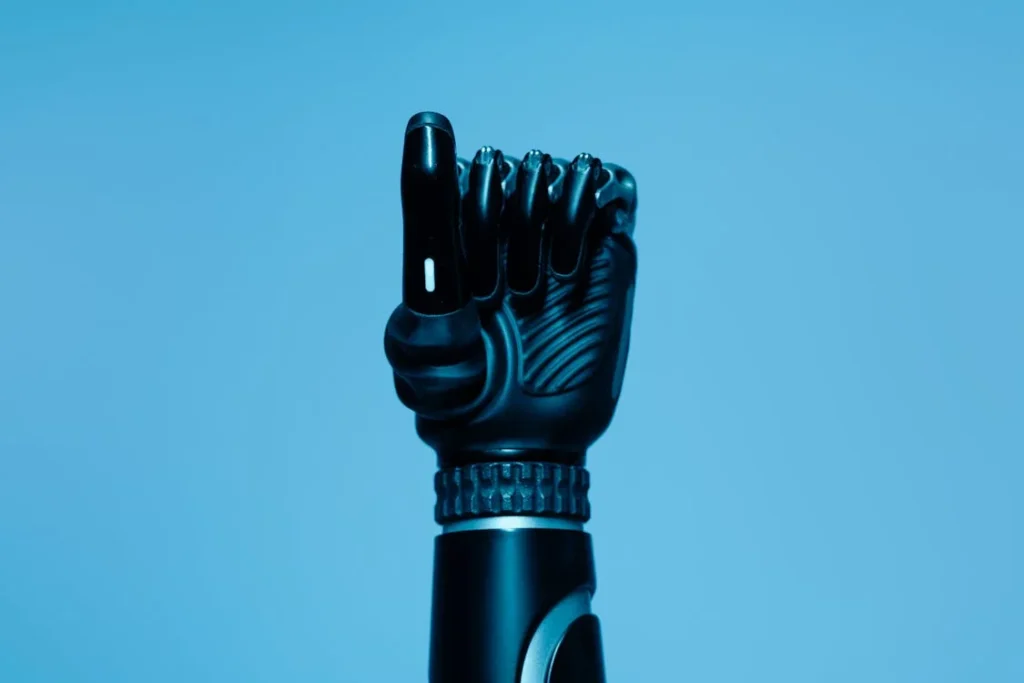
How Advanced Grips Help Users Stay Active and Mobile Into the Future
Movement is Health, and Grip is the Foundation
Staying active isn’t just about fitness—it’s about freedom. Movement keeps your heart strong, your joints flexible, your mood stable, and your independence intact. For prosthetic users, mobility is closely tied to how well your prosthetic supports you. And grip plays a major role in that support.
Whether it’s something as simple as holding onto a handrail while climbing stairs, carrying a shopping bag, or pushing a door open, a good grip helps keep you safe and confident. Without it, you hesitate, pause, or avoid certain tasks altogether.
Over time, these small limitations can shrink your world. You begin to do less, move less, and rely more on others. That’s why the grip is not just a feature—it’s a gateway to long-term mobility and freedom.
Advanced grip technology gives you that gateway. It enables movement that feels natural, balanced, and repeatable. That reliability is what encourages more activity, not less. The more capable your grip, the more confident you feel taking on new challenges. And that confidence is what keeps you moving—not just now, but for years to come.
Reducing the Risk of Accidents and Falls
Many accidents involving prosthetic users don’t happen because of speed or strength—they happen because of hesitation or imbalance. A poor grip can cause a moment of uncertainty. That moment, even if it’s just a fraction of a second, is all it takes to lose your balance or drop something important.
This is especially true with outdoor activities, wet surfaces, uneven ground, or crowded places. When your prosthetic grip isn’t reliable, your brain starts sending “danger” signals even during simple actions. You may avoid using that arm altogether or lean heavily on your natural side. This throws off your balance and increases fall risk.
Advanced grips help break that cycle. With consistent response, controlled pressure, and adaptive movement, they give you the confidence to walk, bend, reach, or carry without second-guessing. And over time, that confidence reduces not only the risk of physical injury but also the anxiety that often follows near-accidents.
Being able to trust your grip means you can focus on your environment instead of worrying about your hand. You become more aware, more stable, and more present in your movement. That’s what true mobility is made of.
Encouraging Physical Activity with Less Recovery Time
One of the silent barriers to staying active is how long it takes to recover from simple exertion. For many prosthetic users, activities like gardening, cleaning, or even walking around the block can leave the arm sore or the shoulder tight. This isn’t always from the task itself—it’s often the side effect of poor grip mechanics.
If your prosthetic grip requires too much force or doesn’t distribute pressure evenly, your muscles and joints end up taking the hit. Over time, this can lead to soreness, swelling, or even inflammation. As a result, you might start avoiding those activities—not because you can’t do them, but because you’re tired of how they make you feel afterward.
Advanced grip designs change that experience. By working with your body instead of forcing it to adapt, they make activity less taxing and recovery faster. Your muscles aren’t overworked. Your posture stays aligned. Your joints stay stable. And because of that, you bounce back quicker. This means you can do more, more often, without needing extended rest between tasks.
This steady rhythm of activity and recovery is vital. It builds strength. It improves circulation. It supports a healthy weight. And most importantly, it gives you control over how you spend your time and energy.
Planning for Aging and Physical Changes
Another critical benefit of advanced grip technology is its ability to adapt to the user over time. Your body will change. As you age, your skin may become more sensitive. Your muscle tone may shift. You may experience arthritis, reduced range of motion, or simply changes in strength and stamina.
A static grip design may not age well with you. What once felt fine can become irritating or limiting. But adaptive grips, with their flexible movement, sensitive control, and smart feedback systems, evolve alongside your needs. They can be recalibrated for lower pressure, adjusted for new grip patterns, and fine-tuned to match reduced strength.
This adaptability is what gives users peace of mind. Knowing that your prosthetic won’t become outdated with your body means you can plan long-term—whether that’s working longer, traveling more, or simply staying independent without depending on others for basic tasks.
With the right grip, your prosthetic doesn’t just support your movement today. It helps protect your mobility for the future.
The Role of Confidence in Staying Active
Finally, we can’t talk about movement without talking about confidence. When you trust your prosthetic, you move without hesitation. You reach without thinking. You explore without fear. That confidence encourages more activity, which leads to better health. And better health reinforces your ability to stay active.
This is a positive feedback loop, and advanced grip tech is what fuels it.
Grip strength alone isn’t enough. You need grip trust. You need to know your prosthetic will respond the way you expect, when you need it to. That certainty keeps you moving—not cautiously, but freely. And when your movement is free, your life is fuller.

Emotional Comfort Through Ergonomic Design: How Grip Affects Mental Well-Being
Beyond Physical Performance: The Mental Load of Inconvenience
Most conversations about prosthetics focus on what the hand can do. Can it hold? Can it lift? Can it grip tight enough? But there’s another layer that matters just as much, though it’s rarely talked about—the emotional toll of using a device that doesn’t quite feel right.
If you’ve ever hesitated before shaking someone’s hand, or avoided holding a fragile object for fear of dropping it, you know that mental weight. It’s not just about function. It’s about how much space your prosthetic takes up in your thoughts. If your grip is unreliable or awkward, your brain stays on high alert. You’re constantly troubleshooting, adjusting, and overthinking simple motions that others do without blinking.
Advanced grip technology relieves that mental load. When the hand feels intuitive—when it listens to you and responds smoothly—you don’t have to think about every little movement. That gives your mind room to breathe. You can focus on the moment, not the mechanism. That emotional ease is a kind of comfort you don’t notice until it’s missing.
Confidence in Social Settings
Social interactions often involve physical gestures—handshakes, passing items, high fives, even something as small as tapping someone’s shoulder. For a prosthetic user, these moments can feel like small emotional tests. Will the grip be too strong? Will the response be too slow? Will the hand feel “robotic” or awkward?
The anxiety around these situations can lead to avoidance, which over time can lead to social withdrawal. When the prosthetic grip isn’t comfortable or precise, it doesn’t just affect what you can do—it starts to change how you engage with others.
But when grip technology is smooth, natural, and predictable, you start to feel like yourself again. You stop hiding your hand or worrying about how it moves. You start using it the way you use the rest of your body—with quiet confidence.
That shift makes a huge emotional difference. It brings ease back into relationships. It rebuilds self-image. It allows you to participate fully, without distractions or fear. And that emotional comfort goes far beyond the hand—it touches every part of your life.
Reducing Frustration Through Seamless Control
Frustration is one of the most common feelings reported by prosthetic users—especially in the early stages of use. It often comes from a mismatch between intent and action. You want to gently lift a glass, but your prosthetic squeezes too tightly.
You want to pick up a coin, but it slips away. These small failures build up quickly. They turn ordinary tasks into obstacles. And they can make the prosthetic feel like an inconvenience, rather than a support system.
Advanced grip systems are designed to close this gap. They respond to subtle muscle inputs, they adapt to object shape and texture, and they provide feedback so you know what the hand is doing—sometimes even before you look at it. That feedback loop rebuilds trust, and trust lowers frustration.
When you know what to expect, and when you see that your prosthetic is learning with you, not just reacting to you, the whole relationship changes. You stop viewing it as a device to manage and start treating it like a partner in daily life. That emotional switch is what makes long-term use sustainable.
The Emotional Value of Independence
One of the deepest human desires is independence. The ability to do things for yourself, by yourself, on your own terms. For many prosthetic users, the road back to independence can feel long. Every step forward requires not just physical ability, but emotional resilience.
A well-designed, ergonomic grip accelerates that journey. It removes obstacles from everyday actions. It gives you more wins, more successes, more moments of “I did that.” And each of those moments adds to your sense of agency.
Over time, this builds into something powerful. You start to make plans you wouldn’t have considered before. You try new things. You re-enter routines that once felt out of reach. And as your activity grows, so does your sense of self.
This is the quiet power of good design. It doesn’t just move your hand—it lifts your spirit. It supports your mental health. It restores dignity in the smallest of gestures, and that restoration stays with you long after the task is done.
Ergonomics as a Daily Act of Self-Respect
Choosing a prosthetic with advanced grip features isn’t just about performance. It’s about care. It’s about giving yourself a tool that respects your body, your time, and your energy. That respect goes both ways.
When your prosthetic supports you, it becomes easier to support yourself. To push forward. To be patient with your progress. To treat your recovery and adaptation not as chores, but as part of a larger story of resilience.
In that sense, ergonomic design is not just technical—it’s deeply personal. It’s a statement: “I deserve comfort. I deserve control. I deserve ease.”
That message, repeated daily through every grip, every lift, every touch, becomes part of your identity. And that identity becomes stronger, healthier, and more whole.
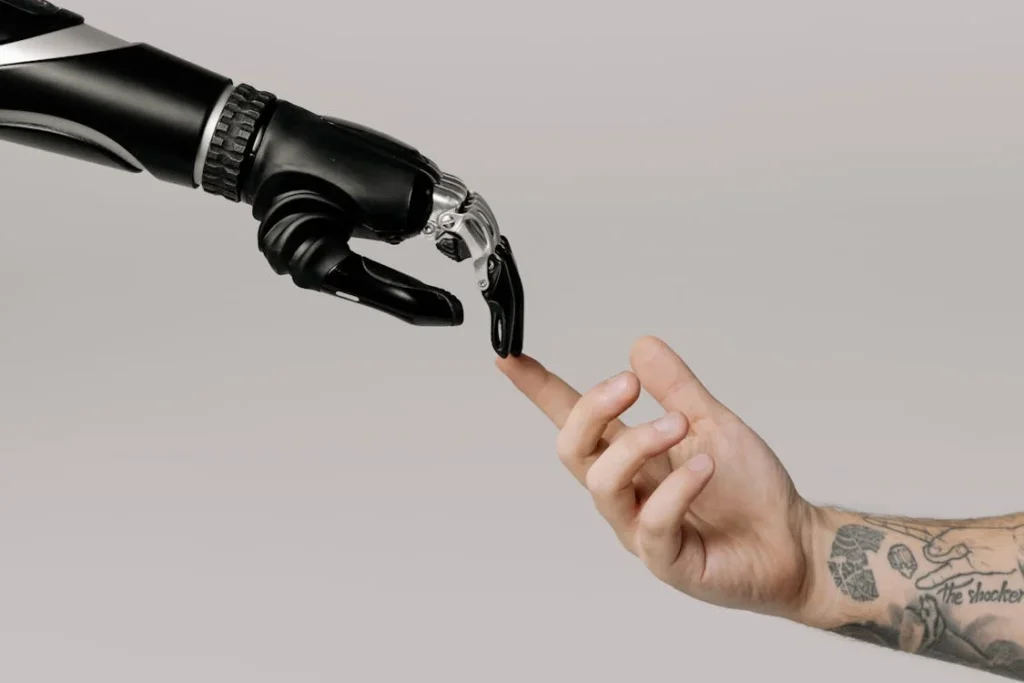
The Role of Materials in Enhancing Ergonomic Grip Performance
Why Material Choice Directly Impacts Comfort and Control
When people think about prosthetic grip performance, they usually think about mechanics—motors, sensors, software. But often, the most important factor lies right under the fingertips: the materials used in the grip itself.
These materials affect everything—from how the hand feels against an object, to how it moves, to how much stress it puts on your body over time. At Robobionics, we see material selection as a cornerstone of ergonomic design, especially for long-term use.
Materials dictate how a prosthetic hand interacts with the world. A hard, rigid grip might offer strength, but it lacks the sensitivity needed for comfort. It may press too firmly on delicate items or transfer too much vibration back into the limb.
On the other hand, overly soft materials may struggle to support heavier tasks. The sweet spot lies in using layered, responsive materials that flex slightly, absorb shock, and return to shape quickly.
This balance gives users a grip that not only works well, but feels right—reducing unnecessary strain while improving task accuracy. The goal is to make the grip feel more like a human hand: firm when needed, but never stiff. Strong enough to hold, yet soft enough to adapt.
Tactile Responsiveness and Shock Absorption
Long-term prosthetic use often comes with a hidden cost: accumulated micro-shocks that travel through the device into the residual limb.
These vibrations, felt during repetitive activities like walking with a cane, hammering, or even holding a power tool, may not seem harmful at first. But over time, they can create real discomfort—especially around the socket area or along the arm.
Advanced grip materials play a critical role in preventing this. Many modern prosthetics now incorporate silicone-based layers or memory foam interfaces in the fingertips and palms. These elements act as cushions, absorbing minor impact and dispersing pressure before it reaches sensitive tissue.
This matters not just for safety, but for comfort. A user who doesn’t feel those tiny jolts every time they grasp a firm object will naturally use their prosthetic more—and with greater confidence. The more relaxed your body is during these motions, the less tension builds up in your muscles, and the less likely you are to develop pain in surrounding joints.
Tactile responsiveness also plays into this. A grip that feels “dead”—with no feedback or give—makes it harder to tell if you’re holding something properly. Responsive materials, by contrast, give subtle cues.
They stretch slightly around an object, change shape under pressure, and return once the item is released. This tiny exchange of pressure and form mimics natural skin-to-object interaction. It helps your brain register grip success without over-relying on sight.
Temperature Regulation and Skin Health
Materials also affect how the prosthetic grip interacts with your skin—especially in hot or humid conditions. Grips made from older or non-breathable plastics can trap heat and moisture, leading to skin irritation or even infection around the limb interface. Sweaty hands also affect grip control, making slips more likely and requiring more effort to maintain hold.
Newer materials solve this problem by offering thermal regulation and moisture-wicking properties. Some grip linings now use mesh-like structures or medical-grade silicone that lets air flow more freely. Others integrate antimicrobial coatings that reduce odor and bacteria buildup.
These features may seem minor, but they matter tremendously for users who wear their prosthetic for hours at a stretch. A cooler, dryer interface not only improves hygiene—it also keeps the hand feeling comfortable and secure, especially during physical activity. And when the user feels good, they use the prosthetic more often, more naturally, and with better results.
Durability Without Bulk
Another critical consideration in long-term use is how materials handle wear and tear. A grip might feel great at first, but if it loses its shape or texture within a few months, it starts affecting performance—and increases the chance of needing repairs or replacements.
That’s why high-quality prosthetics now use composite materials that combine softness with strength. These can include carbon fiber cores layered with soft polymers, or dual-density rubbers that are stiff in the center but flexible on the outside. This layering ensures that the grip keeps its structure over time, even with heavy use, without becoming hard or brittle.
Lightness is also a huge part of this equation. Bulky materials might offer protection but increase the weight of the prosthetic, leading to shoulder fatigue and awkward posture. New grip designs aim to be featherlight, using space-age materials that don’t sacrifice durability. This lightness directly supports ergonomic function by reducing the physical cost of daily wear.
How the Right Materials Empower the User
Materials aren’t just about science—they’re about experience. The feel of your prosthetic hand should be reassuring, not distracting. It should help you forget the mechanics and focus on the moment. The texture should feel reliable. The temperature should stay neutral. The motion should be quiet and natural.
When all these pieces come together, something special happens: you stop “managing” your prosthetic. You simply use it. And that’s the goal—empowering users to live without interruption, without pain, and without second-guessing their movements.
Advanced materials are what make that possible. They turn good design into great design. They create the bridge between man-made technology and human comfort. And they’re one of the biggest reasons today’s prosthetics can serve not just the body—but the whole person.
Conclusion
Advanced grip technology is changing the way prosthetic users live—not just by improving what the hand can do, but by protecting the body, preserving energy, and restoring confidence. Through smart design, adaptive motion, responsive materials, and thoughtful ergonomics, modern grips reduce strain, prevent injury, and support a more natural, active life.
At Robobionics, we believe that long-term comfort is just as important as function. A prosthetic should move with you, not against you. It should feel like a part of you—not a burden. Whether it’s reducing muscle fatigue, improving posture, or giving you the confidence to stay social and independent, the right grip makes all the difference.
This isn’t just about technology. It’s about people—your daily routine, your health, your goals. And with the right grip, you don’t just adapt. You thrive.



